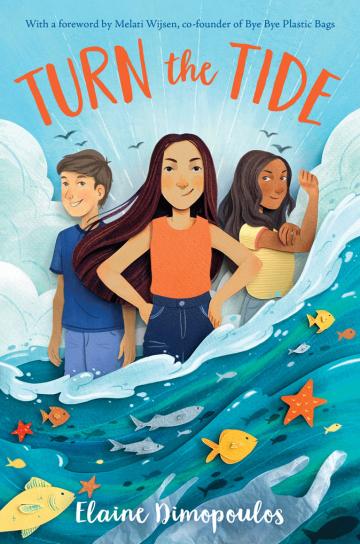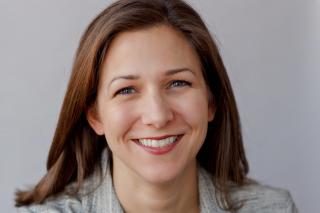How did Simmons prepare you for a successful career as an author?
When I arrived at Simmons, I had some raw writing talent but little else. I knew very little about how a book is written, edited, and published. My instructors in the Writing for Children MFA program instilled in me a deep respect for children’s literature and taught me the nuts and bolts of craft and critical theory. I had the opportunity to work with two editorial mentors, both of whom guided longer fiction projects toward completion. I had incredible peers, who were interested in all facets of book creation, and who pushed me to grow — two of them were involved in the creation of Turn the Tide. At the Simmons Summer Children’s Literature Institutes, I heard so many impressive authors talk about their writing, creative joys, and struggles — I knew that I wanted to be in this world forever.
Something else I learned at Simmons is that even the toughest criticism can be delivered with love and respect. As an instructor in the children’s literature program, I try to apply this lesson in my own classes.
What was your inspiration for Turn the Tide?

Since my first novel, Material Girls, had ecological themes, Bethany Vinhateiro ’09MA, an editor at Clarion Books, asked me to do some research on activists Melati and Isabel Wijsen, to see if there was a novel there. I drove home and listened to the Wijsen sisters’ TED talk, and it lit me on fire. Here were these young girls who had looked at their home island of Bali, recognized that plastic pollution was a real problem, and started a movement that had worked. They got the governor to sign an order to eliminate single-use plastic waste and brought their organization global. They were not concerned with activism as a resume line item, or a pathway to fame and success. They truly wanted to be the kinds of “significant people” who change the world. And they’ve certainly become those people.
Bethany gave me a month to put together a single chapter and a proposal for the book. I think I had 43 pages of poems written in two weeks! They poured out of me. She bought the book and edited it, expertly. When it was completed, Whitney Leader-Picone ’08MA, Art Director at Clarion Books, oversaw the lovely art design.
You wrote this novel in verse. How did you know that was the right choice?
I felt that a book about plastic pollution for children written in prose risked sounding didactic and preachy. With verse, I knew I could focus on moments — the way a bag looks like a white ghost when it’s tangled in a tree, the way it feels to have a door slammed in your face when you’re asking adults to make change, the way the beauty of your Florida island home inspires you to keep going. I wove these series of images and moments together to construct the story.
Your first novel, Material Girls, was for a YA audience. Any challenges specific to the middle grade genre?
The older I get, the more I’m drawn to write middle grade novels. My next novel, The Remarkable Rescue at Milkweed Meadow (Charlesbridge, 2023) is a middle grade animal story. I wasn’t a parent when I drafted Material Girls, and now I have two children, and they’ve softened me! Now I’m drawn to stories loaded with optimism, love, collaboration, and compassion. Not to say that those themes can’t exist in YA, but novels for young adults tend to be edgier and angstier. I do still feel that I have more YA novels in me, but they may present a more literary or retrospective coming-of-age experience.
Do you engage in any activism? Any advice for people just starting out?
I do! I participated in the Women’s March on Washington, D.C. in 2017, which engaged a lot of people who didn’t consider themselves “activists.” I regularly reach out to local and congressional representatives on issues of environmental, racial, and social justice and participate in letter-writing campaigns. And I try to work for small changes locally wherever I see the need.
I suggest following Cafeteria Culture’s Recipe for #plasticfree Change and think about changes you can make on the personal, local, manufacturing, and policy levels.
Tips for the new Environmental Activist:
- Reduce your plastic waste at home by swapping reusable containers for Ziploc bags
- Talk to a local store about stocking compostable bags instead of single-use plastic and posting a sign to encourage customers to bring reusables
- Start a petition asking a manufacturer to use less plastic packaging on their goods
- Write to your representatives in Washington D.C. and vote a certain way to show your commitment to environmentalism
You can apply these levels to any issue that you care about! I believe that we’re moving toward a world where there aren’t a select group of activists we lean on to march in the streets and do the work for the rest of us. We all need to engage and become changemakers.

